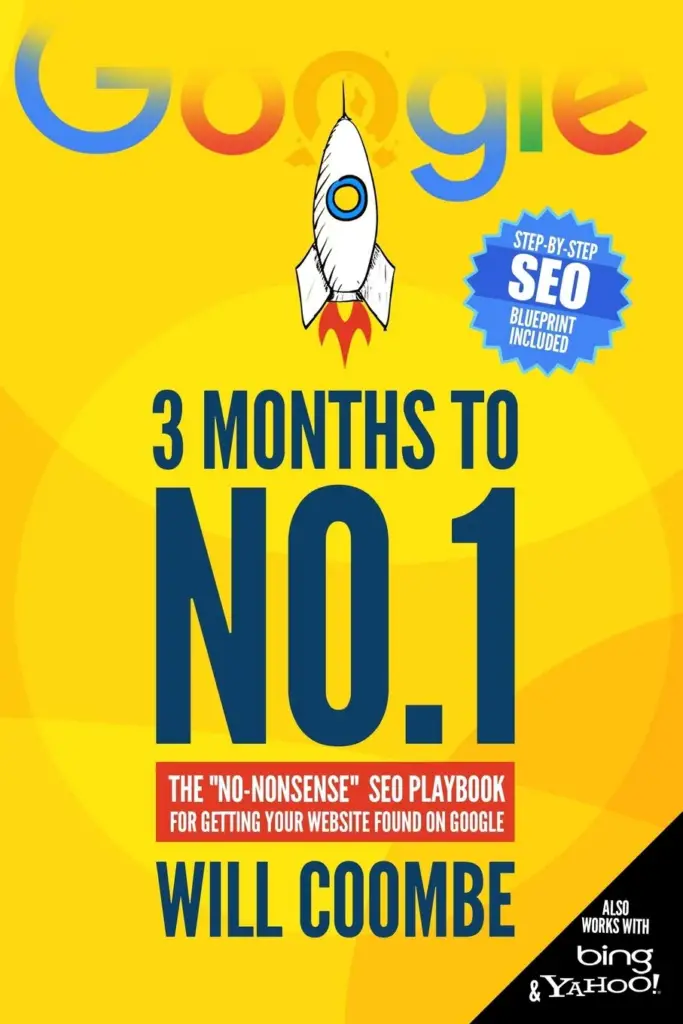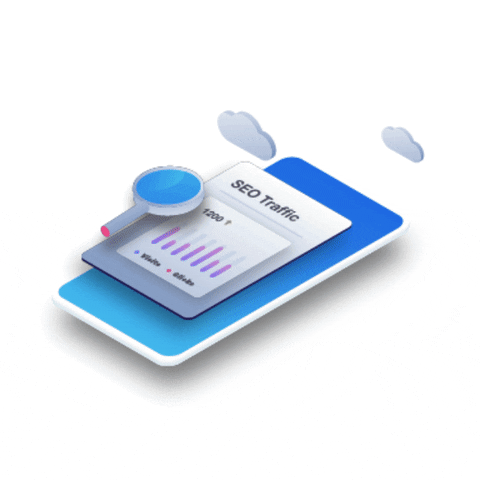In the fast-paced world of digital marketing, blogging stands as a critical strategy for enhancing Search Engine Optimization (SEO). It isn’t just about providing content; it’s a comprehensive approach to meeting the needs of both search engines and human readers, ultimately contributing to the success of a website’s SEO efforts.
Since Google isn’t human and is only able to crawl data, the easiest way it can do that is through written content. By writing content that Google is looking out for such as question-related topics and having an expert opinion, which must come for you!
The more you answer, the more Google will push out your content to an audience. in return, your business could garner better organic traffic. Unlike other form of advertising, SEO is evergreen.
Key Takeaways
- Blogging directly influences SEO through key ranking factors such as content quality, keyword usage, and site structure.
- Optimized blog content, including targeted keywords and meta tags, plays a significant role in improving search visibility.
- A synergy between user experience and blogging enhances site engagement, which can indirectly boost SEO performance.
- Measuring the success of SEO in blogging involves analyzing traffic, user behavior, keyword rankings, and backlink profiles.
- Blogs offer advantages over static pages by providing fresh content, comprehensive coverage on topics, and improved engagement metrics.
How Does Blogging Help SEO

Blogging plays a pivotal role in enhancing SEO performance by influencing key ranking factors. One of the primary benefits is the ability to rank for targeted keywords. By crafting content around these keywords, blogs signal to search engines the relevance and thematic focus of a site.
Blogs also contribute to SEO through the creation of internal links. These links connect various pages of a website, thereby weaving a network that search engines can crawl and understand the structure and importance of the content.
Another significant factor is the improvement of search engine rankings via high-quality backlinks. Guest blogging, for instance, can provide valuable backlinks from relevant sites, which in turn boosts the site’s authority and ranking.
Lastly, blogging increases topical coverage, allowing websites to cover a broader range of subjects and keywords, which enhances the site’s visibility and relevance in search results.

If you want to learn SEO from scratch and get a full breakdown of every step. Take this book!
“3 Months to No.1 SEO” is a great book that is simplified to make almost any reader understand from start to finish what it takes to rank No.1 on Google.
The Role of Quality Content in SEO
In the realm of SEO, quality content is paramount. It’s not just about filling pages with words; it’s about crafting material that resonates with your audience and satisfies their informational needs. This alignment between user intent and content relevance is what search engines, like Google, seek to reward with higher rankings.
Quality content is characterized by several attributes:
- Informative: It provides comprehensive answers to user queries.
- Engaging: It captures and retains reader interest.
- Well-researched: It demonstrates expertise and authority.
- Original: It offers unique perspectives or information.
By focusing on these qualities, you ensure that your content is not only optimized for search engines but also valuable to your readers, fostering trust and credibility.
Optimizing content for SEO leads to a measurable increase in website traffic, leads, and customers over time. It’s a strategic process that involves understanding and implementing SEO best practices, such as keyword optimization without stuffing, to enhance search visibility and meet the expectations of both users and search algorithms.
Frequency of Updates and SEO Performance
The frequency of your blog updates plays a crucial role in SEO performance. Search engines favor websites that consistently publish fresh content, as it indicates an active and current source of information. Regular updates can lead to more frequent indexing by search engines, which in turn can improve your site’s visibility and ranking.
- Regular Updates: Maintain an active blogging schedule with fresh content updates to demonstrate ongoing relevance and authority in your field.
- New and Relevant Content: Newer content often performs better in search, with reports indicating that content less than a month old can significantly impact user preferences and search engine performance.
- Historical Optimization: Updating older posts with new information can refresh your SEO efforts and attract search engine attention without the need to constantly produce new content.
By strategically planning your blog’s publishing schedule, you can optimize for both user engagement and search engine algorithms. Aim for a balance that keeps your content relevant and your audience informed, without overwhelming your content creation resources.
Looking for marketing services to help you boost awareness?
Here at HustleVenture, we are a finance and side hustle newsletter business. So if you are reading this, chances are, we can help you grow your side hustle/business through some of our online services such as:
- SEO writing [Popular⭐]
- Web design
- Videography [Singapore Only]
- Advertising [Popular⭐]
- Copywriting
- Guest post promotion
These are just some ways we can do to promote your business/side hustle. Interested to know more, be sure to schedule a Zoom call with us down below!

Strategies for Optimizing Blog Content for SEO

The rule of SEO is the timing to rank content can take anywhere from as little as a day up to a year. You can’t rush success, right?
If you are looking to optimize your content to rank higher, here’s what we at HustleVenture have done and how you can “copy-paste” our strategy.
Keyword Research and Targeting
Effective keyword research and targeting are fundamental to the success of any blog’s SEO strategy. By understanding the search terms your audience uses, you can tailor your content to meet their needs and improve your visibility in search engine results.
- Step 1: Utilize established keyword research tools like Google Keyword Planner or Ahrefs to uncover high-volume keywords and gain insights into search trends.
- Step 2: Analyze the competition for these keywords to determine the true difficulty of ranking.
- Step 3: Focus on long-tail keywords, which are more specific and often less competitive, to attract a targeted audience likely to convert.
By integrating these keywords naturally into your blog posts, you not only cater to your audience’s queries but also signal to search engines the relevance and focus of your content.
Remember, keyword research is not just about finding words with high search volumes; it’s about understanding the intent behind the searches. This knowledge allows you to create content that aligns with user expectations, thereby increasing the chances of conversion and boosting your SEO efforts.
Incorporating Meta Descriptions and Tags
Crafting an effective meta description is crucial for enticing users to click through from the search engine results page (SERP) to your blog. While not a direct ranking factor, a well-written meta description serves as an ad for your content, influencing click-through rates that are indicative of the page’s relevance to the searcher’s query.
Ensure your meta description encapsulates the essence of your post, integrates your target keyword, and stays within the recommended length of 150-160 characters.
In addition to meta descriptions, the strategic use of meta tags, such as title tags, can significantly impact your blog’s SEO. Title tags are displayed on SERPs as the clickable headline for a given result and are paramount for search engines and users alike.
Here’s a quick checklist for optimizing your meta tags:
- Write compelling title tags that include your primary keyword
- Keep meta descriptions concise and benefit-driven
- Regularly update your tags to include current years or months
- Utilize meta tags to provide clear structure and context for your content
Leveraging Internal Linking Within Blog Posts
Internal linking is a powerful SEO tool that can significantly enhance the navigational experience of your blog’s readers. By strategically placing links to other relevant content within your posts, you not only keep readers engaged but also guide search engine crawlers through your site’s architecture. Effective internal linking can lead to better indexing and improved rankings.
Here are some best practices for internal linking:
- Use relevant, informative anchor text.
- Ensure that each link adds value to the reader’s experience.
- Link from high authority pages to newer content to boost their visibility.
- Embed contextual links within your content that connect to related articles or pages.
Remember, the goal of internal linking is not just to keep visitors on your site longer, but to provide them with a seamless and informative journey through your content.
It’s important to create a lot of content to have more opportunities for internal linking. However, the quality of the links is just as crucial as their quantity. A well-thought-out internal linking strategy can lead to SEO success by distributing link equity and enhancing the overall user experience.
The Synergy Between Blogging and User Experience

Be real!
Enhancing Readability and Engagement
To ensure your blog’s success in SEO, focus on the reader’s experience. Crafting content that is easy to digest and engaging leads to longer dwell times and signals to search engines that your content is valuable. This involves clear writing, proper formatting, and ensuring fast page loading times.
- Use headings and subheadings for easy navigation.
- Optimize images and limit embedded videos to maintain page speed.
- Make your posts readable on all devices, adjusting the format for mobile users.
By enhancing readability, you not only cater to user preferences but also contribute to SEO performance. A blog that is accessible and enjoyable to read encourages visitors to stay longer and interact more with your content.
Remember, a blog with a high readability score can reach a wider audience and engage readers more effectively. Incorporating visuals like images and videos with descriptive ‘alt text’ can also improve user experience and SEO. Lastly, a mobile-friendly design and optimized site speed are crucial for both user engagement and search engine rankings.
Improving Site Navigation Through Blog Structure
A well-organized blog structure is a cornerstone of SEO architecture, enhancing both user experience and search engine visibility. By creating a clear hierarchy of information with intuitive navigation elements, readers can effortlessly find the content they’re seeking, while search engines can more efficiently crawl and index the site.
- Make navigation menus intuitive
- Establish a clear page hierarchy
- Regularly link to relevant pages
These steps not only aid in navigation but also contribute to a robust internal linking strategy, distributing link equity throughout the site and improving page visibility in search results.
A strategic blog structure goes beyond mere aesthetics; it directly influences on-page SEO elements such as internal linking, content accessibility, and overall site usability.
By adhering to best practices in website structuring, you can ensure that your blog not only serves as a repository of valuable information but also as a navigational beacon guiding both users and search engines through your site’s content landscape.
Providing Value to Readers and Encouraging Repeat Visits
Providing value to your audience is the cornerstone of a successful blog. By addressing their pain points, you establish your expertise and build trust, encouraging repeat visits and potential conversions. A blog that consistently offers valuable content becomes a go-to resource, fostering a loyal readership.
Fresh, valuable information is not just about keeping content up-to-date; it’s about enriching your readers’ knowledge and solving their problems. This approach not only enhances user satisfaction but also encourages return visits and content sharing.
To ensure your blog remains a valuable asset to readers, consider the following steps:
- Keep your content relevant and actionable.
- Regularly update your blog with new insights and solutions.
- Engage with your audience by responding to comments and feedback.
- Provide comprehensive coverage on topics to position yourself as an authority.
Remember, a well-designed website that is easy to navigate significantly contributes to a positive user experience, which in turn, encourages customer loyalty and repeat visits. Crafting high-quality, unique, and valuable content is not just beneficial for SEO; it’s essential for building and maintaining customer relationships and driving organic traffic.
Measuring the SEO Success of Your Blog

Understanding how users interact with your blog is crucial for SEO success. By analyzing blog traffic and user behavior, you can gain insights into what content resonates with your audience and how to better cater to their needs. Tools like Google Analytics play a pivotal role in this process, allowing you to track various metrics that reflect user engagement.
To effectively analyze user behavior, focus on metrics such as click-through rate (CTR), bounce rate, and average time on page. These indicators can help you understand the effectiveness of your content and identify areas for improvement.
Here are some steps to get started with SEO analytics:
- Set clear objectives for what you want to achieve.
- Choose the right tools, like Google Analytics, to gather data.
- Conduct keyword analysis to understand search intent.
- Audit your website for technical SEO issues.
- Evaluate the quality and quantity of backlinks.
Regularly monitoring these metrics will help you make data-driven decisions to optimize your blog for better SEO performance.
Tracking Keyword Rankings and Visibility
Monitoring your keyword rankings is crucial for understanding how your blog content performs in search engine results pages (SERPs). By tracking these rankings, you can gain insights into which content is resonating with your audience and search engines alike.
Regularly assessing your keyword positions allows you to refine your SEO strategy and make data-driven decisions to enhance your blog’s visibility.
To effectively track keyword rankings, consider the following steps:
- Identify your primary keywords and track their rankings over time.
- Use SEO tools to analyze keyword performance across different search engines and locations.
- Evaluate the impact of SEO changes on your keyword rankings.
Additionally, it’s important to understand the competitive landscape. Analyzing the keywords for which your competitors rank can reveal gaps in your own content strategy. This can lead to the discovery of new topics that could drive additional traffic to your blog.
Assessing Backlink Quality and Quantity
Backlinks are a cornerstone of SEO, serving as endorsements from other sites. Assessing the quality and quantity of these links is crucial for understanding their impact on your SEO efforts. A robust backlink profile not only improves domain authority but also enhances search engine trust.
To evaluate backlink quality, consider the ‘Authority Score‘ of referring domains, which reflects the domain’s credibility and influence. Tools like SEMrush’s free backlink checker can assist in this analysis. Additionally, ensure that backlinks come from websites with relevant content and respectable SEO standings.
The goal is to acquire backlinks that are not just numerous but also qualitatively superior, contributing positively to your site’s SEO profile.
Remember, not all backlinks are created equal. A strategic approach to backlink assessment involves looking at several factors:
- The authority of the linking domain
- The relevance of the content to your niche
- The SEO metrics of the linking site
By focusing on these aspects, you can better gauge the value of each backlink and strategize accordingly for future link-building efforts.
Comparing Blogs and Static Pages in SEO Strategy
Content Freshness and Search Engine Crawling
The regular addition of fresh, relevant content is a cornerstone of effective SEO strategy, particularly through blogging. Search engines like Google prioritize websites that are frequently updated, as this indicates an active and current source of information for users. Blogs serve as an ideal medium for this, offering a dynamic way to introduce new topics, discussions, and insights, which in turn encourages more frequent search engine crawling and indexing.
By maintaining a steady stream of fresh content, websites can enhance their visibility and improve their chances of ranking higher in search results.
Moreover, each blog post presents an opportunity to optimize for new and varied keywords, which can expand a site’s reach and relevance in search queries. The table below illustrates the impact of content freshness on search engine crawling:
| Content Age | Search Engine Crawling Frequency |
|---|---|
| 1 week old | High |
| 1 month old | Moderate |
| 6 months old | Low |
Consistent updates not only signal to search engines that your site is a valuable resource, but they also provide a platform for strategic keyword optimization, further enhancing SEO.
Opportunities for Comprehensive Topical Coverage
Blogging offers unparalleled opportunities for comprehensive topical coverage, which is essential for establishing topical authority in your niche. By delving deeply into a subject, you can demonstrate extensive knowledge and expertise, which not only fosters user trust but also improves search rankings.
When you niche down and cover one topic in depth, you create a robust content strategy that signals to search engines the relevance and breadth of your knowledge. This approach can lead to a stronger presence in search results for a wide array of related queries.
Topical mapping is a strategic approach that organizes content into clusters, making it easier for search engines to understand the structure and depth of your site’s content. Here’s how you can integrate topical coverage into your blog:
- Identify core topics relevant to your business and audience.
- Create pillar content that provides a comprehensive overview of each topic.
- Develop supporting blog posts that delve into subtopics and details.
- Use competitive keyword research to guide content towards sought-after queries.
- Regularly update and expand on topics to maintain relevance and authority.
Engagement Metrics and Their SEO Implications
Understanding the influence of engagement metrics on SEO is crucial for bloggers aiming to optimize their content’s performance in search engines. Metrics such as bounce rate, time on page, and pages per session are pivotal in assessing how users interact with a blog. These indicators provide insights into the content’s relevance and value to the audience, which in turn can affect search engine rankings.
- Bounce Rate: Reflects the percentage of visitors who leave after viewing only one page.
- Time on Page: Indicates the average duration a user spends on a single page.
- Pages per Session: Shows the average number of pages viewed during a session.
By closely monitoring these metrics, bloggers can identify areas for improvement and adjust their content strategy to better meet the needs of their audience. This proactive approach not only enhances user experience but also contributes to a blog’s SEO success.
It’s important to note that while these metrics are not direct ranking factors, they send significant signals to search engines about the quality of a website. A high bounce rate might suggest that the content is not meeting user expectations, whereas longer time on page and more pages per session can indicate engaging and valuable content.
Are you doing Your blogging?
Blogging is a vital component of SEO that offers a multitude of benefits for enhancing a website’s search engine rankings. Through the creation of fresh, keyword-rich content, strategic internal linking, and the generation of valuable backlinks, blogs serve as a dynamic tool for improving online visibility.
They not only help in targeting long-tail keywords and boosting social media engagement but also play a crucial role in establishing brand authority and fostering user engagement.
While not mandatory, incorporating a blog into your digital marketing strategy is a powerful way to drive organic traffic, engage with your audience, and ultimately, contribute to the success of your business in the digital landscape.
Looking for marketing services to help you boost awareness?
Here at HustleVenture, we are a finance and side hustle newsletter business. So if you are reading this, chances are, we can help you grow your side hustle/business through some of our online services such as:
- SEO writing [Popular⭐]
- Web design
- Videography [Singapore Only]
- Advertising [Popular⭐]
- Copywriting
- Guest post promotion
These are just some ways we can do to promote your business/side hustle. Interested to know more, be sure to schedule a Zoom call with us down below!

Frequently Asked Questions
Do blogs help with SEO?
Yes, blogs help with SEO by influencing key ranking factors. Regularly updated blogs with high-quality and relevant content can significantly boost a website’s search ranking performance.
How does blogging help SEO for beginners?
For beginners, blogging helps SEO by creating engaging content that drives targeted traffic, which can convert into leads. This content improves organic search visibility and contributes to advanced SEO strategies.
Why does blogging improve search engine optimization?
Blogging improves SEO by enhancing a website’s visibility, increasing organic traffic, and improving user experience. It also allows for increased topical coverage, which is beneficial for search rankings.
Is a blog necessary for SEO?
While not an absolute requirement, having a blog is highly beneficial for SEO. It offers advantages such as improved search engine rankings, enhanced online visibility, and better engagement with your audience.
How do blog content help SEO performance?
Blog content helps SEO performance by serving as a dynamic platform to engage with the audience, build brand authority, and showcase industry expertise, which in turn boosts search engine visibility.
Are blogs or static pages better for SEO?
Blogs often provide fresh content, keyword optimization, and internal linking opportunities, which can be more beneficial for SEO compared to static pages. They also support long-tail keyword targeting and social media amplification.




